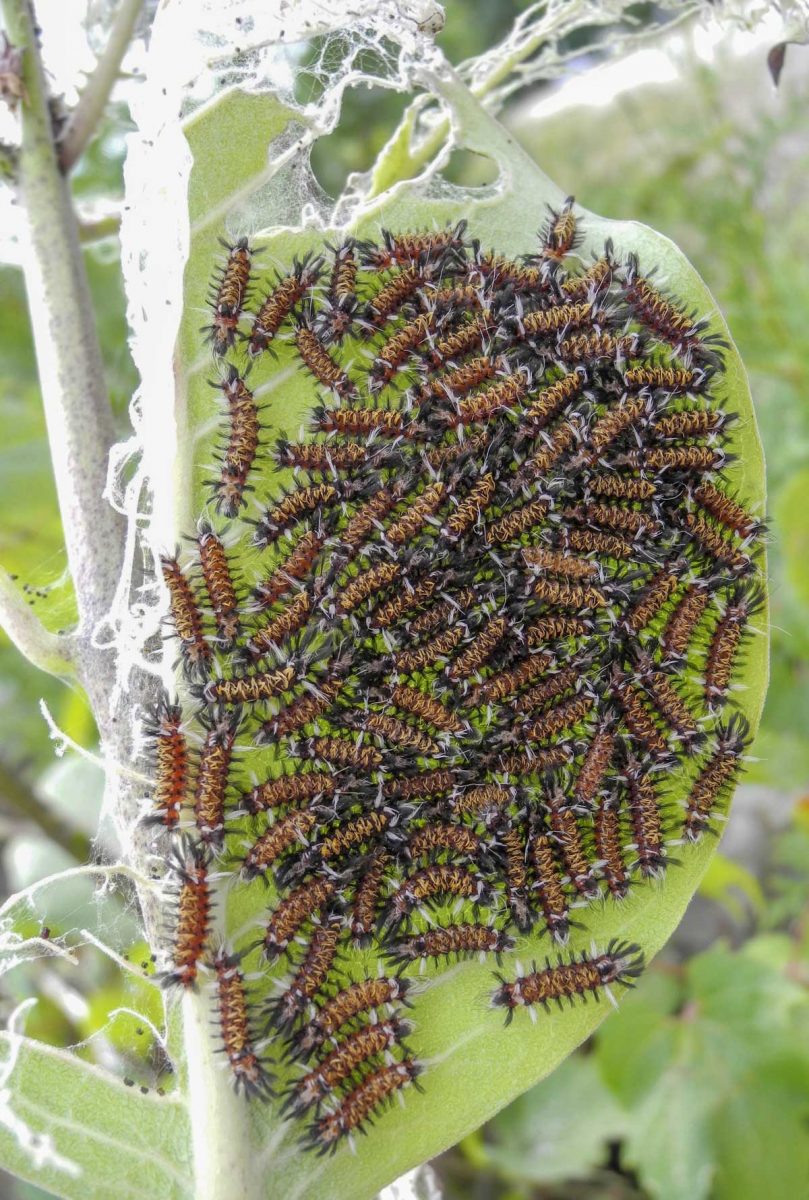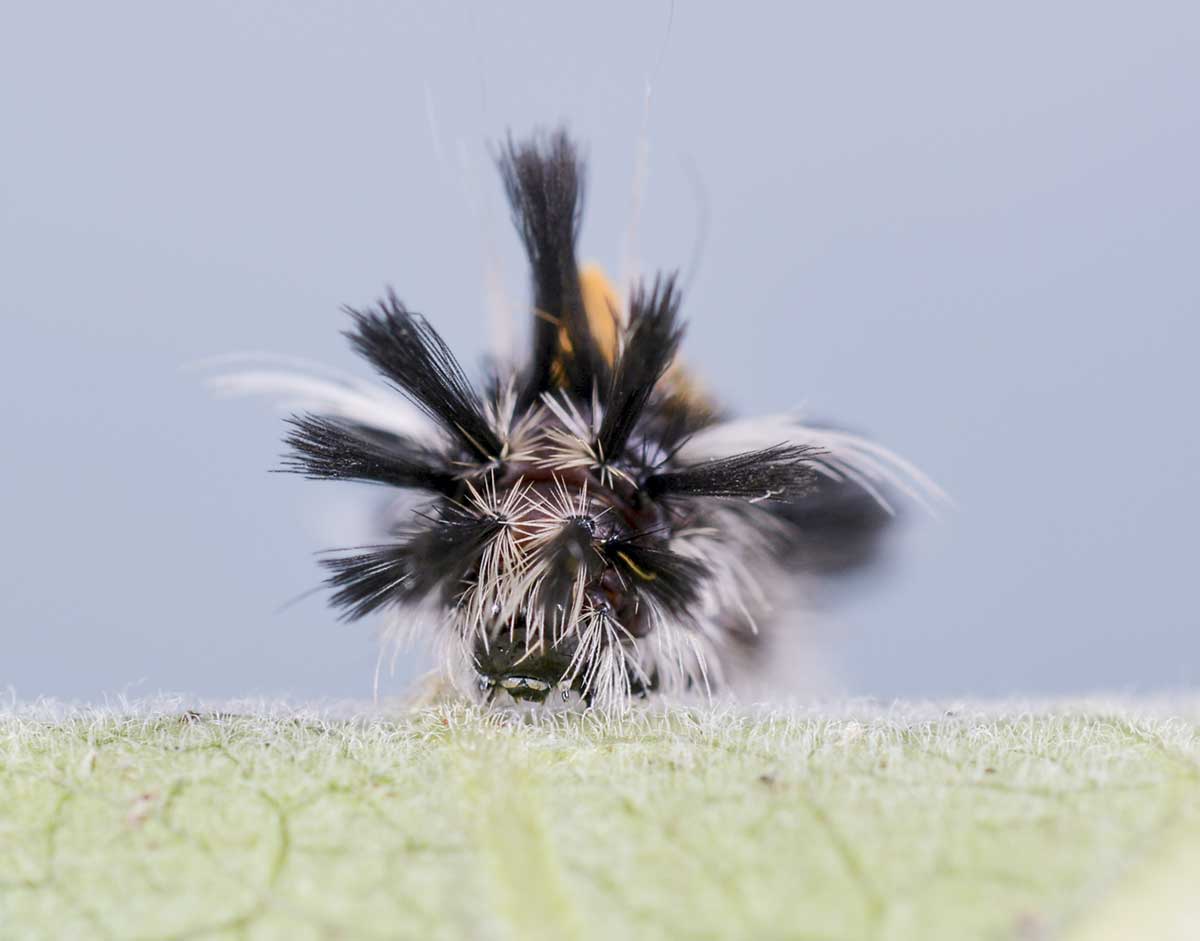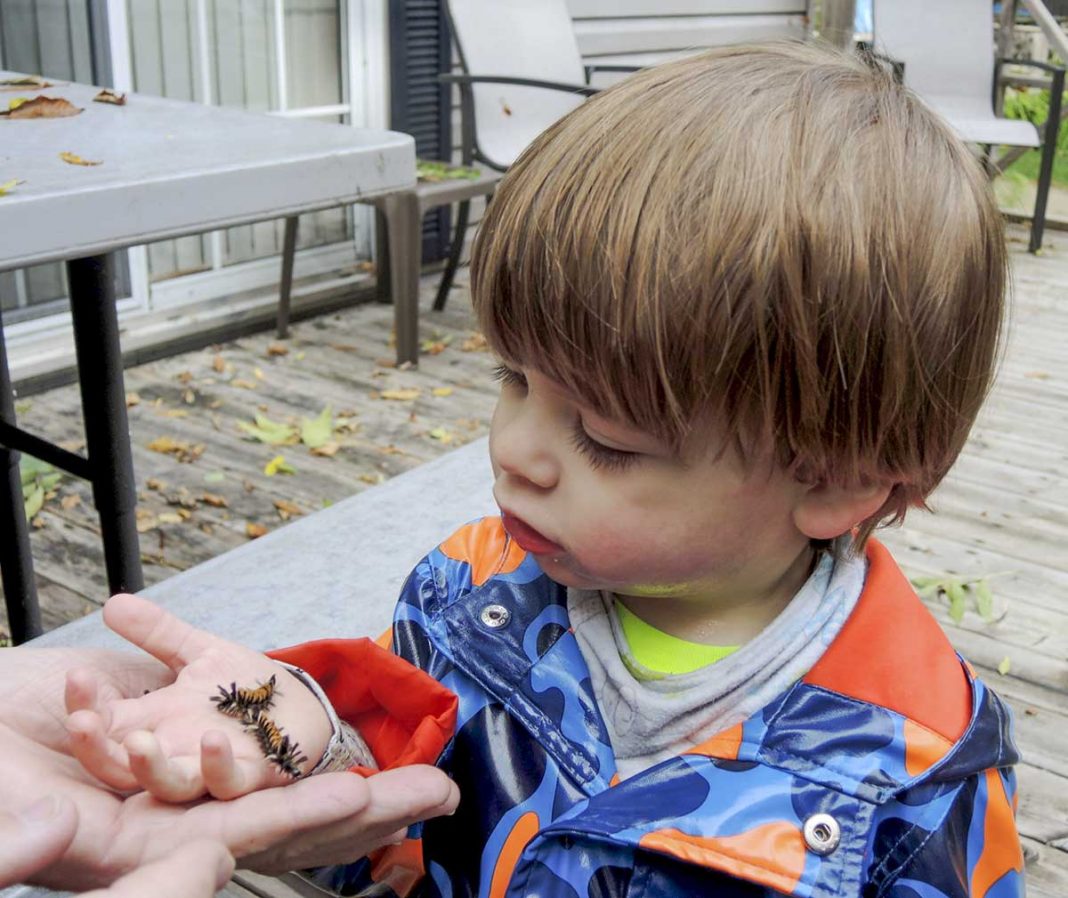by Joe Shorthouse
MANITOULIN – As we drive or walk along snow covered roads or sidewalks bringing New Year cheer to friends and relatives, we seldom think of the many thousands of species of insects that also call Manitoulin Island home.
Yes, they are all present at this festive time of the year in one form or another, most resting in a cold-induced stupor under the blanket of snow. Some kinds of insects overwinter in the egg stage, others in larval, some in cocoons and a few such as the morning cloak butterfly rest in the adult stage under logs. But they are all in preparation for a spring appearance and ready to play their roles in Manitoulin ecosystems.
Moths that overwinter in either the caterpillar or pupal stage are among these fascinating insects as they built up antifreeze in their blood in the early fall to keep from freezing. One of these species of moth, the milkweed tussock moth, also known as the milkweed tiger moth, with the awkward scientific name Euchaetes egle, overwinters in the leaf litter of local milkweed patches.
I consider the full grown caterpillars of the milkweed tussock moth Manitoulin’s cutest critter. We don’t usually think of insects as being ‘cute,’ reserving this moniker for baby mammals such as squirrels or fawns.
However, this past summer I spent several hours watching caterpillars of milkweed tussock moths and many of the children at Batman’s Campground near Sheguiandah would agree that the babies of this moth are just as cute as baby mammals.
Caterpillars of the milkweed tussock moth feed exclusively on the leaves of common milkweed, alongside their cousins the monarch butterfly. Both species have the uncanny ability to eat the leaves of highly poisonous plants without causing themselves harm.

Milkweed gets its name from the sticky white sap that exuded from stems and leaves when their surface is broken by hungry insects or curious humans. Milkweed sap contains nasty chemicals called cardiac glycosides which are heart poisons that can kill humans and other animals foolish enough to eat them.
Birds vomit dramatically when they attempt to eat tussock or monarch caterpillars and soon learn to avoid them, a task made easier by the bright colours of the larvae.
Also intriguing is that the milkweed poison accumulates in the bodies of both caterpillars and as a result, they don’t bother to hide. Instead, they bravely announce their presence by bodies ringed with colours of yellow or orange, white and black, daring any predator to attempt to eat them.
The life cycle of the tussock moth is similar to all others with egg, caterpillar, pupal and adult stages. The milkweed tussock moth overwinters in the pupal stage inside a cocoon covered with its body hairs. Adult moths emerge in late spring and lay clusters of eggs on the underside of milkweed leaves. Caterpillars are the most frequently seen stage whereas the mouse-coloured adult moths fly at night and are rarely seen.
In contrast to solitary monarch caterpillars, freshly hatched tussock caterpillars start life feeding with their siblings in dense herd-like clusters.
Young larvae feed on the bottom surface of leaves, but avoid damaging veins because the white sap could glue them in place. The first couple instars, or growth stages followed by moulting of their outside skeleton, are drab with a pale yellow colouring.
As the larvae grow, they eventually chew into small veins, but large veins remain untouched. The young larvae have small, black dots on their light gray bodies and when viewed closely, the black dots are the beginnings of black tufts of hairs. As leaves are eaten down to the main veins, they commonly fold and bend over to become a bridge or tightrope to a new leaf.

After a few moults, they turn into beautifully-coloured caterpillars that look like fuzzy bedroom slippers or fluffy calico-coloured shih tzu puppies. Later, the black, white and orange tufted larvae feed individually, or in pairs, and wander off their defoliated hosts in search of new milkweed plants.
As if the larvae with their ability to eat and store poison isn’t amazing enough, the adult night-flying moths also have tricks to avoid being eaten by bats. One is that the adults retain the cardiac glycosides from their caterpillar stage and are just as poisonous as are the caterpillars.
Bats can’t see colours of their prey at night and so resort to using sound waves to locate their food. However, tussock moths thwart this manoeuver by emitting sounds of their own that are easily detected by bats. Organs at the base of their wings emit ultrasonic signals which the bats soon discover means a noxious, distasteful meal and instead chase after soundless insects.
Each of the many thousands of different kinds of insects on Manitoulin Island boast fascinating stories. The milkweed tussock moth is just one example. Perhaps one New Year’s resolution could be to learn a little more about these critters and gain an understanding of their role in sustaining Manitoulin ecosystems.
Joe Shorthouse is a retired entomologist with Laurentian University and spends his summers studying and photographing Manitoulin’s six-legged critters.




